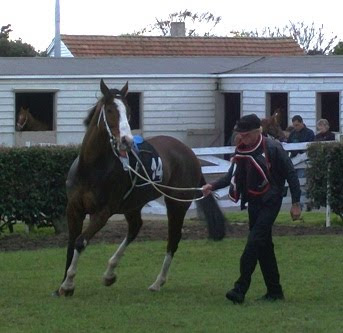OTAMATEA PROGRESSThe native members of the Wesleyan connection, with the assistance of their European friends, have built a beautiful church, near the Tanoa point, and close to the settlement of the chief, Adam Clark. The church is built in the Gothic style of architecture. The services are conducted by the Rev. Mr. Gittos, who has been resident some eighteen years amongst the natives, and has acquired the native tongue with that degree of proficiency so necessary to one in his position. It is astonishing with what deference, nay, affection, the natives address him. His power over them appears almost unlimited.The natives have a considerable amount of cultivation, taken as a whole, but it does not average more than a quarter of an acre per adult. The land is a rich flat, of limestone formation, which grows heavy crops of maize, &c. The river is navigable for large vessels quite up to the settlement.Mr. Gittos holds English services at stated intervals, when settlers from the adjacent districts, viz., Paparoa, Maungaturoto, Kaiwaka, Hakaru, &c, are present in considerable numbers. … The residence of Mr. Gittos is opposite the church, and in a snug nook by the river-side, most conveniently situated, and commanding a fine view. There is a capital orchard, and the flower garden is most tastefully laid out. There are several very choice shrubs and flowers amongst the numerous sorts, which flourish beyond expectation. To the left, across the river, on the side of a high cliff, is Mr. Masefield's hotel, where the steamer stops, and discharges her freight on the pier erected there. Lower down the river, to the right, is Mr. McMurdo's late residence, now occupied by Mr. Peace, who has a small factory for preserving fish in tins, principally mullet. The district is thriving steadily, and must certainly be of great importance.
Southern Cross, 20 May 1875
At Tanoa, beside the Otamatea River, is Kakaraea, a place of great beauty. I was very, very privileged and fortunate to be taken there last Saturday by my good friend Liz from the Mad Bush Farm. You'll see her earlier post on this place here.
From the outside, you'd reckon the old church has seen better days. It was once much grander, but time has seen it altered to a more prosaic form.
But, while this cathedral no longer has its gracious butresses, no glorious stained glass windows illuminating and illustrating the faith of parishioners, it has something much better: it has a deep and far reaching essense of soul, a sense of place that is indescribable, yet captures mind and heart.
And who needs stained glass artifice here, when the beauty of nature just beyond the walls offers a vaster view than any that could be conceived by man?
Update, 1 May 2011: Kakaraea Church has been registered as Category II by NZHPT.































































